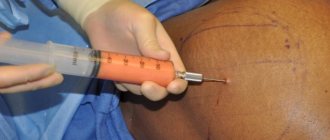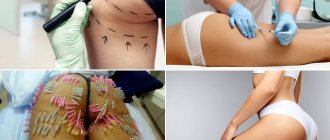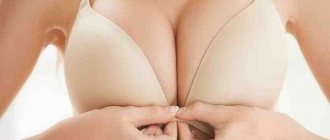What are buttock implants and why are they needed? Since ancient times, beautiful, voluminous hips and elastic buttocks have been considered a sign of sexuality and beauty.
However, this is not given to every person. Under the influence of natural age-related changes, previous injuries, and childbirth, the external condition of the buttocks can noticeably deteriorate.
Unfortunately, in some cases, fitness classes are ineffective, so women begin to think about buttock augmentation through surgery. This operation is called gluteoplasty.
Not only women, but also men who want to make their body more attractive and sexy resort to such intervention. And photos of people with buttock implants after surgery show amazing results.
Features of buttock augmentation with implants
Augmentation with implants is called endoprosthetics or gluteoplasty. The essence of the operation is that a small depression (the so-called pocket) is first made between the muscles in the patient’s sacral area.
This cavity serves as a place to place an implant (silicone or filled with saline).
There are 3 types of implant placement:
- under the fascia above the gluteus maximus muscle;
- between muscle fibers;
- under the muscle.
The surgeon will help you select the staging option. Under no circumstances should it be implanted directly under the skin, otherwise the transition boundaries will be noticeable, and the implant itself may shift and become deformed due to unreliable fixation.
There are two main types of artificial implants:
- anatomical, which have a natural teardrop shape;
- round.
In addition, buttock implants can be smooth or porous, and have different sizes and shapes. It is believed that smooth material is more durable, hygienic and does not tend to deform over time.
Silicone implants are more durable, and their structure is similar to the natural structure of human muscles.
There is no need to worry that buttock implants may not withstand physical activity or become deformed over time. The material for these products is extremely durable. It can easily withstand the effects of natural physical activity, sports, etc.
The structure of the implants is as follows:
- A strong, dense shell, hollow inside.
- Filler (medical silicone or saline solution).
All butt implants come with a lifetime warranty and unlimited use.
The size, shape, and location in the soft tissues of the buttocks are selected strictly on an individual basis.
The process of selecting equipment, the future shape of the buttocks and materials occurs in personal agreement with the plastic surgeon, but based on the client’s personal recommendations and wishes.
The key factor in this is the anatomical features of the buttock structure and the state of human health. The operation is performed under general anesthesia to minimize pain and psychological discomfort for the patient.
You should not order implants that are too large if you have a lack of fat in your buttocks. This can lead to the boundaries of the transition being noticeable, and the body will look disproportionate and not aesthetically pleasing.
After the operation and rehabilitation period, the sutures are tightened quite quickly. However, it is not necessary to see a doctor to remove stitches.
| Problem | Method |
| Flat buttocks | |
| Flat top | |
| Flat outer sides | |
| Flat inner sides | |
| Flat bottom |
The period of complete rehabilitation is quite long and averages 5–6 months. There are other ways to enlarge the buttocks. They are presented below.
What are the dangers of reversing breast implants?
I talk a lot about the benefits of breast surgery all the time. There really are a lot of them. This type of aesthetic correction of appearance is considered safe and effective today. Over many years of world practice, thousands of patients have undergone breast augmentation with implants.
However, it is worth discussing the negative aspects of this correction. Yes, unfortunately, they exist, but, looking ahead, I will say that these small troubles do not pose a serious danger. So, today we will talk about breast implants, or more precisely, about their revolution inside the mammary glands.
If round implants flip, there is no need to re-correct
How does this happen?
Unfortunately, this happens, which is a fly in the ointment.
First, let's remember that breast implants come in round and teardrop shapes. If the round ones turn over, nothing special happens. More precisely, the patient herself simply does not feel any discomfort. Sometimes a round implant can turn over not along the axis, but along the plane, like a coin. Then there will be a slight asymmetry of the mammary glands. But, as a rule, this option also does not bring much inconvenience. Such asymmetry is perceived as natural, because there are no girls with perfectly symmetrical mammary glands. So if round implants flip, there is no need for correction.
The situation is different with teardrop-shaped breast implants. They have a pronounced accent in the lower part, so any displacement of such dentures will be noticeable. Asymmetry in this case will no longer look harmless; the breasts will take on a strange shape. Therefore, girls faced with such a problem turn to plastic surgeons for additional correction.
Why does implant displacement occur?
The issue of safety, of course, primarily worries patients and doctors. Many girls get scared if the prosthesis flips. However, I want to calm everyone down right away. There are no health consequences to this. An inverted breast implant is purely an aesthetic problem. Therefore, there is no need to panic. It is important for the patient to simply decide for herself whether her breasts are getting comfortable, or whether she still wants to correct the shape during re-correction.
An inverted breast implant is a purely aesthetic problem
Many people wonder how often implants flip. In my opinion, yes. This happens for various reasons. Firstly, as a result of mechanical damage - falls, blows, injuries. Secondly, the work of the pectoral muscle forces the prostheses to slowly shift. This is quite normal if it does not go beyond the natural asymmetry that we discussed above.
It is worth noting that this process has a time frame. I’m talking about the fact that in the first months after surgery, the tone of the pectoral muscle is increased, therefore it is during this period that the probability of the implant shifting is high. The tone gradually decreases, and after a year such mild complications become rare. Here I would like to note that some time after mammoplasty there is no visual difference between round and teardrop-shaped implants.
Therefore, in order to avoid troubles with turning the latter and not face repeated surgery, you should carefully weigh all the pros and cons when choosing the shape of the prosthesis. Drop-shaped ones are installed according to strict indications. You should not take on unnecessary problems and opt for such implants if the doctor, after studying your initial data, suggests installing round dentures.
Re-correction
If, after all, the patient is faced with the described problem, then there is no need to despair. As we have already found out, the flip of implants does not threaten health. Aesthetic correction in this case is not difficult. The surgeon will simply have to adjust the already installed prosthesis. Of course, the operation will be performed under general anesthesia, the patient will have to go through the recovery period again, but all this will not take the form of a disaster. Rehabilitation will take a little less time and be smoother.
However, surgical measures are resorted to only in isolated cases when the shape of the breast has noticeably changed. Otherwise, the girls don’t bother and leave everything as it is, because a slight asymmetry, as we have already noted, is quite natural and appropriate. In the end, I would like to remind you that in any case, even if the new breast is in perfect order, you need to regularly visit your plastic surgeon as part of a routine examination. The doctor will notice any changes, if any, at an early stage and take steps to correct the problem.
You can make an appointment with plastic surgeon Valery Staisupov by phone: +7 (812) 430-44-41.
Lipofilling (with your own fat)
In some cases, surgeons may use fat tissue removed from the patient himself. An important condition for this is the presence of fat accumulations on the body sufficient to give the desired shape and size.
This substance is extracted extremely delicately, so that a minimum number of cells are damaged.
Donor material is collected under completely sterile conditions, so the patient has nothing to worry about. In this case, fat cells are transplanted directly under the skin or fascia.
This type of buttock augmentation is called lipofilling. If all manipulations were carried out according to the rules, and the patient himself observed the restrictions during rehabilitation and followed all recommendations, then the possibility of resorption of adipose tissue is minimal.
Sometimes the plastic surgeon may additionally treat the donor tissue with plasma synthesized from the client's own blood.
The rehabilitation period for lipofilling lasts less, since the patient’s biological tissues take root better and faster.
An important condition is to wear special compression garments for approximately 30 days from the date of the operation. During this time, the fabrics will take on their final shape.
Using mesothreads
An alternative way to correct the shape and size of the buttocks is to enlarge them using special bio-threads. This special material is placed in a fan pattern under the gluteal muscle. This method allows you to significantly tighten the soft tissues and improve the shape of the buttocks.
There is no need to worry that bio-threads (meso-threads) may break or move - small hooks are used to securely fix them.
Thanks to this, the muscles and thighs are compressed, and the buttocks become more rounded and toned. At the same time, the rehabilitation period is the shortest of all the proposed types.
This method of tightening has a short-term effect - up to 2 years.
FAQ
Most often, patients who decide to undergo the procedure are interested in the following questions.
How intense will the pain be during the rehabilitation period?
The pain syndrome is a sensation of moderate intensity and goes away after 5-7 days without additional use of analgesics.
Is this operation safe?
If there are no contraindications, yes.
How long will the results be visible?
If the implants are selected and installed correctly, they will last a lifetime.
Is it true that the prosthesis can move during weight loss?
Yes, the implant is a movable structure, and with some displacement of the muscle tissue due to a decrease in its volume, this phenomenon can occur.
Is it true that the product will be felt during palpation?
This is possible if the thickness of the gel layer is too large.
Can dentures become deformed, harden or freeze due to temperature changes?
Modern models do not. The silicone component may slightly change its structural content if we are talking about a cheap and low-quality product.
Is this correction method the simplest solution to improve the shape of the buttocks?
This is not true, since buttock implantation is a long-term process that requires a lot of endurance, willpower and patience, especially during the recovery phase.
Some myths regarding buttock augmentation with implants are described in detail in the video.
Indications for gluteoplasty
How to determine that you need the help of a plastic surgeon to enlarge your buttocks and give them a seductive shape?
Below are a number of indications for the use of gluteoplasty.
INDICATIONS
- too small and inexpressive (or too large and disproportionate) buttocks;
- sagging soft tissues, loss of elasticity;
- the presence of post-operative marks and scars (in some cases);
- changes in the shape of the buttocks as a result of age, weight loss/gain;
- consequences of injuries;
- partial atrophy of fascial muscles.
Contraindications for surgery
Although buttock augmentation is not a particularly complex operation, there are still a number of direct and indirect contraindications that should be strictly adhered to.
CONTRAINDICATIONS
- acute diseases of internal organs;
- any chronic diseases of the internal system;
- any blood diseases, diabetes;
- dysfunction and disorders of the endocrine system;
- HIV AIDS;
- after insolation and ECG;
- if the patient has a tendency to form keloid scars;
- after following a strict long-term diet (the body may be exhausted);
- in the presence of severe diseases of the cardiovascular system.
There is no point in saving on your health, so you should only choose a clinic with a good reputation for performing the operation. Before you begin, you must have a face-to-face consultation with a surgeon, as well as undergo a number of preliminary tests and additional studies that he will prescribe for you:
- blood tests - general and biochemical;
- coagulogram;
- general urine analysis;
- tests for the presence of hepatitis viruses, HIV, syphilis;
- fluorography.
Contraindications
Since the procedure belongs to the category of surgical procedures, it has a number of contraindications. Ignoring can lead to serious health problems , and reduce to zero the entire effect of the manipulation:
- pathologies of the circulatory system;
- overweight, obesity;
- diagnoses of internal organs in the active stage of the disease;
- heart failure;
- chronic diabetes;
- inflammatory processes in the area of intended implantation of products;
- minor age threshold of the patient;
- malignant neoplasms;
- skin grafts in the area of planned correction.
How to prepare for surgery?
Preparation for buttock enlargement should occur in stages. First of all, 2 weeks before the scheduled date of the operation, you should completely stop taking alcohol, as well as drugs that directly affect blood clotting.
The operation will be better tolerated on an empty stomach, so it is necessary to stop eating 6-8 hours before the implantation of implants in the buttocks.
A video with recommendations and features of endoprosthetics can be viewed below.
If on the eve of the operation the patient is very nervous or suffers from insomnia, then it is allowed to take sedatives and hypnotics.
The operation usually does not last long - from 1 to 3 hours. The rehabilitation period is quite long and ranges from 4 to 6 months, depending on the individual characteristics of the body.
At this time, swelling, redness, swelling, and numbness at the installation sites may be observed in the buttock area.
There is no need to panic, as these phenomena do not pose a threat to health or the condition of implants in the buttocks. Reviews about rehabilitation can be read on thematic forums on the Internet.
Technique of the operation
The technique of the operation can be divided into three main stages:
- After the onset of anesthesia, an incision of the intergluteal fold, 3 to 5 cm long, is made in the sacral area.
- At the site of the incision, a bed for the endoprosthesis is formed (under the gluteus maximus muscle, its fascia, or inside the muscle). The implant is not placed directly under the skin, since with such an installation there is a high probability of the formation of an overly thick capsule around it, which in the future threatens to compress the prosthesis and deform the buttocks.
- The surgeon sutures the incision site with self-absorbing sutures.
The intervention lasts from 1.5 to 3 hours, and after it you need to spend another 2-3 days in the hospital.
Question answer
You may be able to “feel” your butt implants when you sit for a while after surgery. But later, the implants are usually included in the image of your body, and after a while they are perceived as part of the buttocks. In other words, your brain considers them part of your body. The same thing happens with breast implants, which simply become a “part” of the body after a few months of implantation.
If done correctly, butt implants should not be noticeable. To ensure the success of your procedure, be sure to choose a board-certified plastic surgeon with extensive experience. Although even if the operation was performed by a professional, you can feel the implant. If you want to get a natural feeling, just pay attention to lipofilling (injection of fat). This procedure can give a natural feeling.
Buttock implants don't rupture because they are not like breast implants: they are completely solid and not filled with something.
Postoperative period (7 stages)
You should also follow some recommendations during the recovery period:
- It is better to spend the first 24 hours after surgery in a hospital, where qualified doctors can provide their patient with the necessary care.
- For the first 7 days you only need to lie down and not do any physical activity.
- It is necessary to limit the body's sitting position as much as possible.
- It is not recommended to visit a public swimming pool, sauna, or solarium for about a month and a half.
- You should not engage in physical activity for the first 30 days after surgery.
- It is necessary to limit or completely stop drinking alcoholic beverages and smoking.
- For about 3 months you must wear special compression garments.
If after surgery you feel painful symptoms, then, in consultation with your doctor, you can take painkillers that the doctor will prescribe.
Why and when does this happen?
The reasons why implant rotation occurs can be different. This often happens due to the fact that the implant is not fixed to the capsule or the dimensions of the latter do not correspond to its dimensions.
Displacement is possible due to severe physical stress, during which the pectoral muscle exerts a mechanical force on the implants, causing them to turn over. Professional athletes and girls who are actively involved in sports especially often suffer from this. Systematic training and intense stress on the muscles of the chest and shoulder girdle can cause rotation. During the recovery period, implant rotation occurs for two reasons:
- refusal or incorrect wearing of compression garments, the patient’s failure to comply with the doctor’s recommendations;
- improper formation of the implant pocket.
Late displacement most often occurs after trauma: when the patient is involved in a traffic accident or falls on her chest.
Buttock implants, consequences and complications
The most common problem that occurs after surgical buttock augmentation is rejection of the implant by the patient’s body.
In some cases, a negative reaction from the immune system may occur. In addition, there is a small percentage of complications occurring after the patient has undergone anesthesia:
- Wounds received during surgery can take a long time to heal, and if improperly or improperly cared for, they can even become infected. In this situation, repeated surgery will be required to remove the implants.
- In some cases, fibromas and keloid scars may form at the site of the sutures.
- Sometimes the patient may experience increased sensitivity of the buttocks, they may feel very cold or hurt. This is caused by damage to blood vessels and nerves. These symptoms may cause a person to have problems with their gait. Such cases require mandatory removal of the implants.
- In some cases, atrophy of the gluteal muscles may begin.
What is gluteoplasty?
Gluteoplasty or buttock replacement is a surgical operation to install implants under the gluteal muscle or its fascia. They are a dense shell with a smooth or ribbed surface, filled with viscous silicone (volume 140-180 ml).
Gluteal implants can be round or oval (used to give the “fifth point” roundness), teardrop-shaped (to correct those resulting from injuries, surgeries or congenital defects).
Gluteal endoprostheses differ from breast implants in their increased strength, and if they are damaged, silicone does not migrate into the surrounding tissues.
Prices for operations
The implantation of implants in the buttocks is considered an expensive procedure; the price will start from about 100 thousand rubles, depending on the type of augmentation and the individual policy of the clinic.
In addition, it is worth considering that you will additionally have to pay for anesthesia, hospital stay and the provision of compression garments.
The most inexpensive operation is considered to be trimming fat deposits. More expensive is lipofilling – correction of the shape of the buttocks with the patient’s own fat.
For an increase in bio-threads you will have to pay about 2 times more.
The most expensive operation is the one involving buttock implants. The price in Moscow will start from approximately 120 thousand rubles. However, this is the only method that has lifetime effectiveness and a guarantee.
The rehabilitation process should include approximately 10 sessions with a doctor, which will also have to be paid additionally.
Reviews
Endoprosthetics of lobar fragments of the buttocks is a fairly common procedure that is not considered too complicated and belongs to the class of organ-sparing plastic surgery.
But, despite this, you should carefully weigh all the arguments in its favor and study the undesirable consequences so that the decision made is balanced and justified.
If you are familiar with this method of correcting the shape of the buttocks from your own experience, leave your comment on this article, and perhaps your information will be very useful to someone.
Expert opinion
- Cosmetologist
- Surgeon
Irina Dorofeeva
practicing cosmetologist
During recovery from buttock augmentation with implants, you are not allowed to sit for one week after surgery. Patients can stand, lie on their stomach or side. After a week they can sit for ten minutes every hour. Scars that are located inside the buttock crease are easily hidden by swimsuits and most types of underwear.
Michelle Place
plastic surgeon
Like any surgical procedure, recovery occurs in stages.
Definitely the first two weeks are the hardest. Walking is acceptable starting the very next day, but it will take 2-3 weeks until it becomes habitual. Thus, most patients will need to spend at least two weeks away from work, and some may need 3-4 weeks. If you are unable to correct the shape of your buttocks through fitness classes or simply by gaining weight, then we advise you to think about gluteoplasty.
This surgical operation is almost guaranteed to help achieve the desired effect and quickly get the figure of your dreams. Moreover, some types of these operations will be effective throughout life.
Watch a video on this topic, read reviews, look at the “before” and “after” photos of implanting implants in the buttocks and, if you decide, then confidently go towards your dream of a beautiful body.
The expert spoke about the main risks of breast augmentation surgery
Breast augmentation surgery is one of the most popular in plastic surgery. On social networks and forums you can find many horror stories about complications and risks during this difficult procedure. The Aesthetic Medicine portal talked to a professional about this topic. Candidate of Medical Sciences and plastic surgeon Andrei Andrievsky spoke about the difficulties that women who decide to undergo breast augmentation may encounter. The doctor identified 5 main risks, 4 of which can be corrected by the same plastic surgeons.
1. Implant flip
Let's start by flipping the implant. This happens when the patient receives an anatomical implant. Under certain circumstances, it can change its location and roll over. In this case, we need to perform an operation to correct this complication: we change the “shifter” to another anatomical implant. By the way, if you replace it with a “round implant,” then you definitely won’t be afraid of repeated complications. Even if it rotates, it will not affect the appearance of the breasts,” noted Andrei Andrievsky.
2. Capsular contracture
The second common complication is capsular contracture. All the implants we work with are ultra-modern and compatible with the body. That is, the human body does not reject them. But in any case, a certain capsule is formed around the implant. In rare cases, it becomes thicker than necessary and puts pressure on the mammary gland. Then you need to promptly remove the implant along with the capsule and install a new one,” says the expert.
3.4 Seroma and hematoma
The third risk is seroma. This is a fluid that sometimes collects around the implant. The problem is solved very simply: we remove all the liquid in one procedure using a miniature puncture. The procedure is carried out under the control of an ultrasound machine: we see everything we do, which means we fully control the process. In addition, not only water, but also blood can accumulate. If it surrounds the implant, we do the same procedure: all excess blood is removed using a puncture,” the plastic surgeon reassures us.
5. Reduced nipple sensitivity
The fifth risk is a violation of nipple sensitivity: complete or partial. Sensitivity is usually restored within a year. Sometimes sensitivity does not fully return after 2-3 years. In this case, we cannot do anything: it is impossible to restore sensations in this intimate place 100%.
Note that 4 out of 5 named complications can only be solved with the help of professional doctors. And in the case of loss of nipple sensitivity, it is still better to consult a doctor. If you are going to undergo breast augmentation surgery, it is better to be prepared for some of these risks in advance. Fortunately, all of them are not fatal with proper monitoring and monitoring of the patient.









